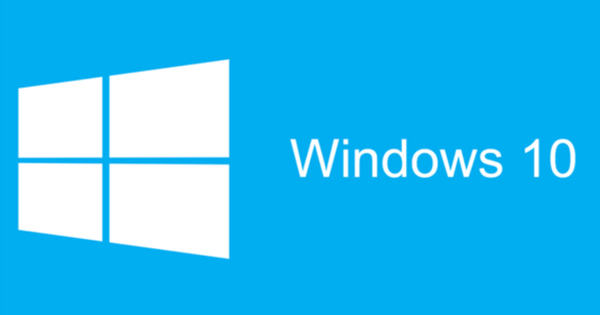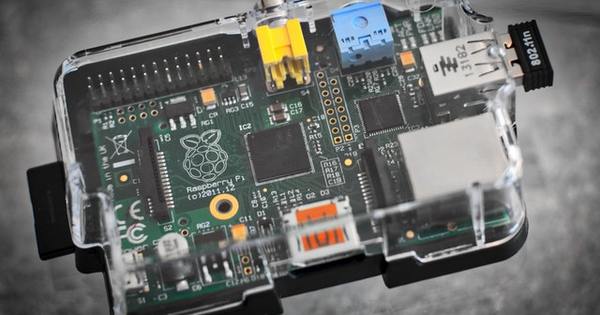According to Microsoft, Windows 10 is the latest version of the iconic operating system. While this statement was still somewhat difficult to appreciate in 2015, we now know what that means. There will be no more major new versions, but we do go from Windows 10 to an even newer Windows 10 every six months. Is that enough or is it time for Windows 11?
Windows 10 is the longest running Windows version after Windows XP. It has been around for almost four years and nothing is officially known about a successor. According to Microsoft, there will not be, because Windows 10 is 'software-as-a-service', a product that is regularly updated and provided with new functions, without us having to do or pay anything for it. But that 'service' does mean that Microsoft is in charge of your system.

Not original anymore
The Windows 10 that is now on many PCs is already not the original version, but a version that has since been updated with a November Update, an Anniversary Update, a Creators Update, a Fall Creators Update, an April Update and an October Update which became a November Update. And this spring the next version will be added, currently known as Windows 10 19H1, but soon just the next spring update. All those updates have changed Windows 10 significantly: more components have been moved from the Control Panel to the Settings window, new apps such as Paint 3D, View 3D and Remix 3D have been added. Furthermore, PowerShell has become the new default command prompt, privacy options have been expanded, more tiles fit in the start menu and OneDrive now also shows offline files.
Microsoft has to convince not only consumers but also companies with Windows 10. Microsoft wants companies to upgrade faster and immediately buy new versions of Office and Windows Server, or cloud products such as Azure and Office 365. The success of the cloud products in particular is important to Microsoft. Those products ensured that the company was worth more than Apple for the first time in eight years at the end of 2018.
 Since the release of Windows 10, we are already six versions further.
Since the release of Windows 10, we are already six versions further. Update issues
However, it is not all gold that glitters. Quality and reliability are essential for the success of Windows 10's mission, and that is exactly what went wrong at the end of 2018. Version 1809 (the October Update) turned into a drama. Soon after the rollout started, users complained that they had lost programs and even documents during the upgrade. Microsoft then stopped the rollout and investigated the problems. When it thought it had solved the cause in November and started actively distributing the update again, new complaints quickly came in, such as about not being able to access shared network folders and problems with iCloud. This time, however, the issues affected significantly fewer Windows 10 users, which prompted Microsoft not to stop the update again.
The issues with the October version have not done Windows 10 any good. While the earlier April Update and the Fall Creators Update were the fastest rollout of a new version of Windows 10 ever, the latest October Update falls far short of that. The assignment is therefore clear, the upcoming April Update should be everything the predecessor was not: stable, problem-free and packed with new functions.
 The next major update to Windows 10 is coming in April.
The next major update to Windows 10 is coming in April. April Update 2019
The next major release of Windows 10 will be the April Update of 2019. This version brings new changes to the system, new functionality and further improvements to the user interface. The main changes to the user interface are the new light color scheme that gives the taskbar and all menus and windows a light blue appearance with lots of white accents.
At the same time, many menus are given a shadow effect and a number of display issues with the dark theme for apps and Windows Explorer have been solved. This includes the scroll bar and the display of hyperlinks. The emoji toolbar that allows happy faces to be entered in text since the Fall Creators Update can be moved. In addition, the number of emojis has been expanded.
Another notable change is the display of file and folder date fields. These are now displayed in a user-friendly way as today, yesterday, Sunday at 10:00 PM and 6 minutes ago.

Changes
There are also changes to the deeper workings of Windows. Remarkably, a number of apps that were only recently added to Windows 10 can now be uninstalled. For example, this applies to 3D viewer, the calculator, the calendar, Groove Music, Mail, Movies & TV, Paint 3D, Sticky Notes and the Voice Recorder.
The number of options to defer Windows Updates for a period of up to seven days has been increased and simplified. In addition, this option is also coming to the Home Edition of Windows 10 for the first time. Another change to Windows Update is that it will allocate up to 7 GB of storage space for system caches and downloaded updates. For now, this only happens on new computers with the next Windows version installed from the factory and after a clean install of that next Windows version.

Windows gets smarter
Artificial intelligence (or AI) is the ability of a computer to correctly interpret data, learn from it and take smart actions from it itself. Microsoft is already using AI to determine which devices will get the next Windows Update first, those that Microsoft AI expects will have “a positive upgrade experience.” But AI is also being used more and more in Windows, for example to make the user experience more personal. For example, AI can create a personal playlist based on the use of the PC or propose apps that match the use of the PC. Developers can make their apps smarter by using the ready-made machine learning models (ML is the technology behind AI) that have been in Windows since update 1803 and that are expanded with each release.

Login without password
Windows security is also getting a major overhaul in the April Update. This makes it possible to log in without a password. Instead, you link a phone number to the Microsoft account used and log in with a unique code that will be sent via text message. This capability will probably only come to Windows 10 Home, business users have been able to log in with a Yubikey or other FIDO2 key since the last update. With the April Update, Windows 10 Pro users will be able to run suspicious applications or risky actions in the Windows Sandbox: a Hyper-V-based container that consumes relatively few system resources during use and is completely cleaned up afterwards.

The further future of Windows 10
Further ahead and well beyond the April Update, there are important developments for the future of Windows 10. The first is Microsoft's choice to rid the unsuccessful Edge browser of its proprietary EdgeHTML engine and move to Chromium. Chromium is the open source HTML renderer also used by Google Chrome and Opera, which is effectively the de-facto standard for rendering web pages, as well as browser plugins and web applications. With Chromium, Microsoft hopes to give users a better experience, but again also win business users and developers for their own browser. For example, developers now have to test everything they develop separately for EdgeHTML, while very few actually use that browser. As a result, many developers forgo those tests and Edge loses even more ground. The choice for Chromium also means that Microsoft will soon also be able to offer the new Edge browser on Windows 7 and 8/8.1 and very important, because the choice for Chromium forces Microsoft to remove it from the operating system, and can also update it much faster and more often. than is now the case with Edge.

Windows Lite?
As open as Microsoft is about the future of Edge, as closed it is about Windows Lite. Rumor has it that Windows Lite is a Windows Core OS based operating system intended to compete with Chromebooks. Windows Lite will probably run Universal Windows Apps (UWP), known from the Windows Store, but also Progressive Web Apps (PWA), the latest generations of applications for use in the browser, a Chromium browser. PWAs mainly consist of html5, javascript and css3 and are therefore easy to port between different operating systems, but they also offer offline functionality, access to online storage and, for example, push notifications.
Windows Lite will be an uncompromising version of Windows, for example, stripped of all the old programming code that is so much needed for backward compatibility on the PC, and which may not even be called Windows in the end. Lite will run on Qualcomm Snapdragon processors and the latest generations of Intel 10nm processors on the Ice Lake architecture.
Windows Insider Program
Do you already want to get started with the next version of Windows 10? Then enroll one of your Windows 10 PCs in the Windows Insider program. Depending on the type of previews and the speed you choose, you will receive a new preview version of the next major Windows version on your PC up to every week. Participation is free, but keep in mind that you are using untested software, which can therefore contain more errors. You must also agree to Microsoft's collection of extended usage data.


